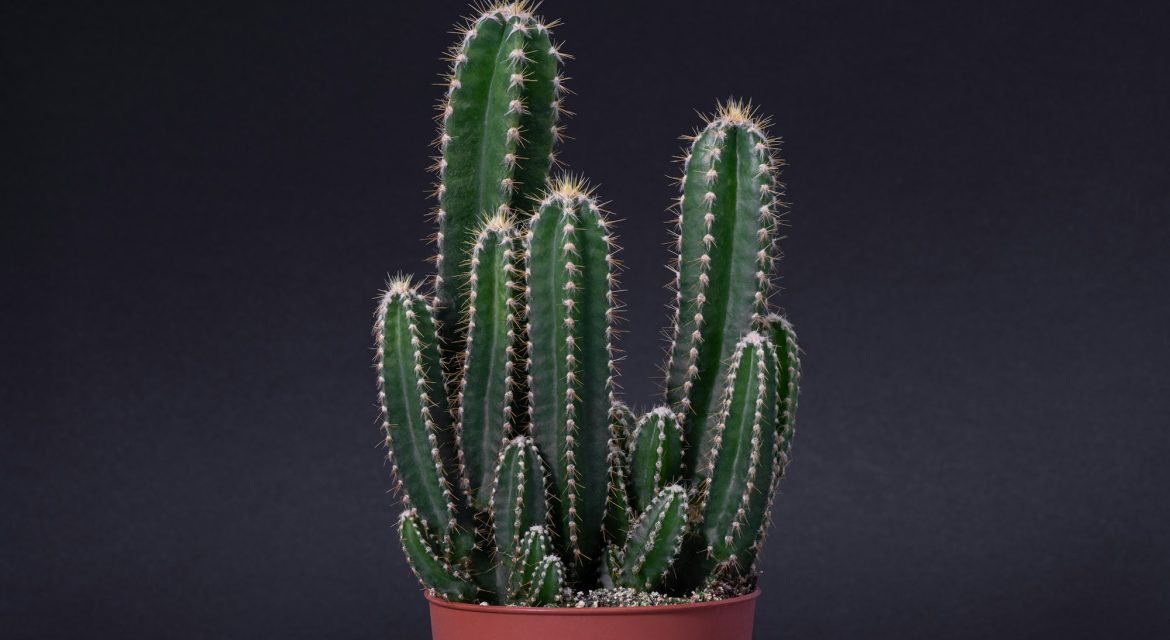The cereus peruvianus cactus, also known as the Peruvian apple cactus or columnar cactus, is a striking and unique plant that is native to South America.
This tall, columnar cactus can grow up to 30 feet tall in the wild, although it is usually smaller in cultivation. With its impressive size, beautiful flowers, and easy-to-care-for nature, the cereus peruvianus cactus is a popular choice for cactus enthusiasts and gardeners alike. In this guide, we’ll cover everything you need to know about this impressive plant, from its history and unique features to its care requirements and potential problems.
History and Features of the Cereus Peruvianus Cactus
The cereus peruvianus cactus is native to South America, where it grows in a variety of habitats, from arid deserts to tropical forests. It is known for its tall, columnar shape, which can reach up to 30 feet in the wild. The cactus features vertical ribs that are covered in sharp spines, which serve as a protective barrier against predators and help to regulate the plant’s temperature.
One of the most striking features of the cereus peruvianus cactus is its flowers. The plant produces large, showy, white flowers that bloom at night and last only one night. The flowers are followed by edible fruit that resembles a small apple, hence the name “Peruvian apple cactus.”
The cereus peruvianus cactus, also known as the Peruvian apple cactus or columnar cactus, is a striking and unique plant that is native to South America.The cereus peruvianus cactus is an easy-to-care-for plant that thrives in a wide range of conditions. Here are some tips for caring for your cactus:
- Light: These cacti prefer bright, indirect sunlight. Place your plant near a window that receives plenty of natural light, but avoid direct sunlight as it can scorch the plant’s skin.
- Water: Cereus peruvianus cacti are drought-tolerant and do not require frequent watering. Water only when the soil is completely dry, typically every two to three weeks. Be careful not to overwater, as this can lead to root rot.
- Temperature: These cacti prefer warm temperatures between 60-90 degrees Fahrenheit. Protect your plant from cold drafts or extreme temperature changes.
- Soil: Cereus peruvianus cacti prefer well-draining soil that is low in organic matter. Use a cactus-specific soil mix or make your own by combining sand, perlite, and peat moss.
- Fertilizer: During the growing season (spring and summer), it’s recommended to fertilize your cactus every two weeks with a balanced fertilizer. Reduce or eliminate fertilizer during the winter months when the plant is dormant.
Potential Problems with Your Cereus Peruvianus Cactus
While the cereus peruvianus cactus is generally a hardy plant, there are a few potential problems to watch out for. Here are some common issues and how to address them:
- Sunburn: If your cactus is exposed to too much direct sunlight, it can become sunburned. Symptoms include brown or white patches on the skin. Move your plant to a shadier location to prevent further damage.
- Overwatering: Overwatering can lead to root rot, which can be fatal to your cactus. Make sure the soil is completely dry before watering and avoid watering too frequently.
- Pests: Common pests that can infest cacti include mealybugs and spider mites. Remove pests with a gentle spray of water or by wiping the leaves with a damp cloth. You can also use an insecticidal soap to help control the infestation.
- Diseases: The cereus peruvianus cactus can be susceptible to fungal diseases, such as root rot and stem rot. Symptoms include a softening of the stem or discoloration of the skin. Remove any affected areas and ensure proper watering and drainage to prevent further issues.
- Pruning: Pruning is not necessary for the cereus peruvianus cactus, but you may choose to remove any dead or damaged areas. Use a clean, sharp pair of scissors or pruning shears to avoid damaging the healthy parts of the plant.
The cereus peruvianus cactus is a unique and striking plant that is easy to care for and makes a beautiful addition to any cactus collection or garden. With its impressive size and beautiful flowers, this plant is sure to turn heads and impress visitors. By following the care tips outlined in this guide and keeping an eye out for potential issues, you can ensure that your cereus peruvianus cactus thrives and produces beautiful blooms for years to come.





